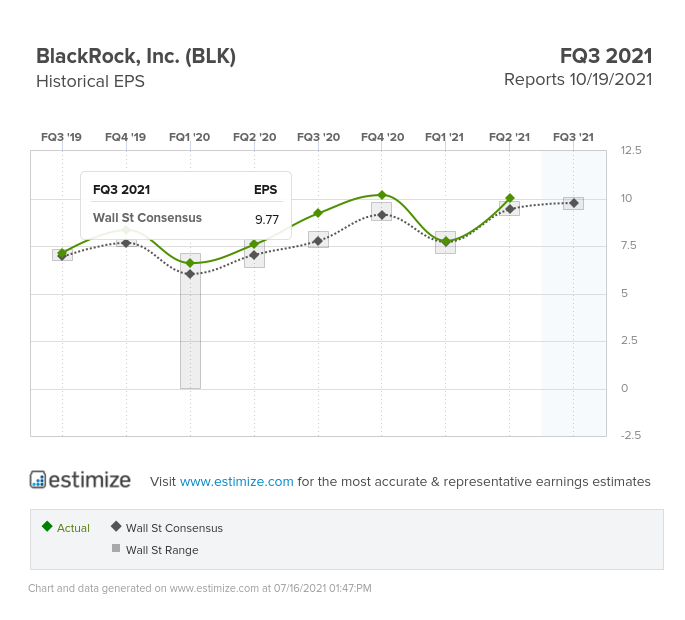S&P 500 earnings update
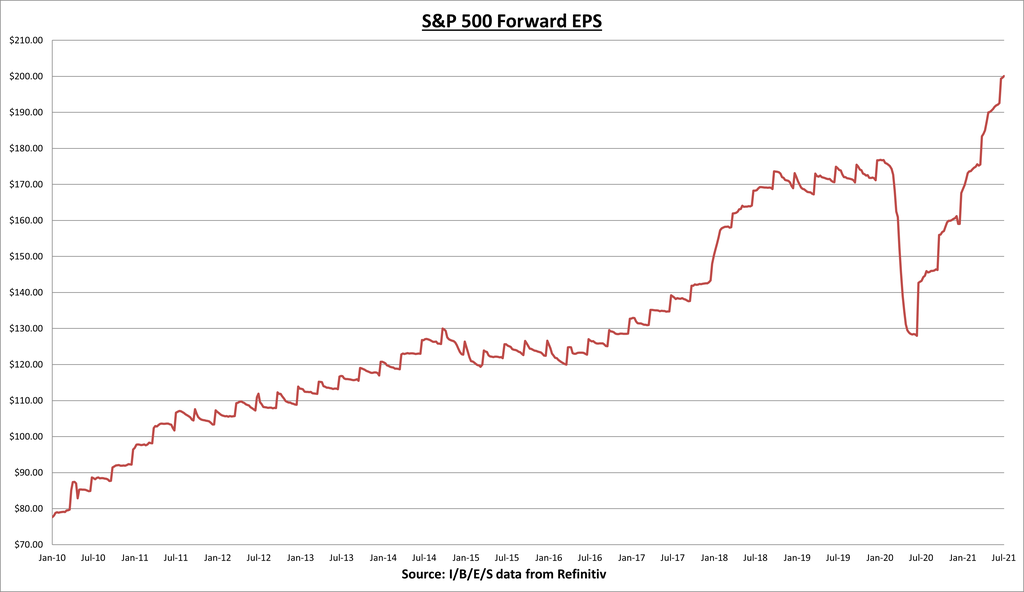
S&P 500 earnings per share (EPS) increased to $200.07 last week. The forward EPS is now +25.8% year-to-date.
Only 8.2% of the index has reported Q2 earnings so far, but the results remain stellar. 90% have beaten EPS estimates by a combined +19.2% above expectations. (I/B/E/S data from Refinitiv)
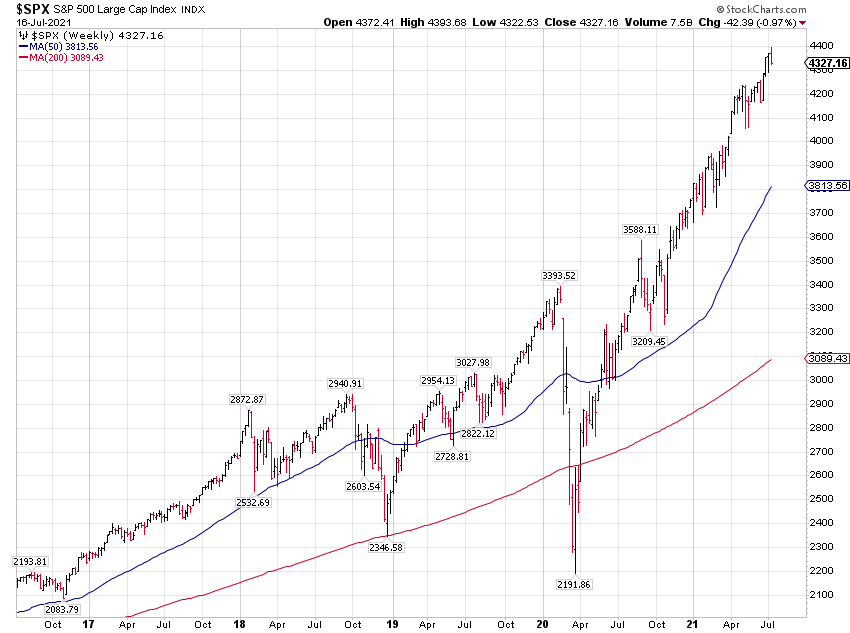
The S&P 500 declined -0.97% last week.
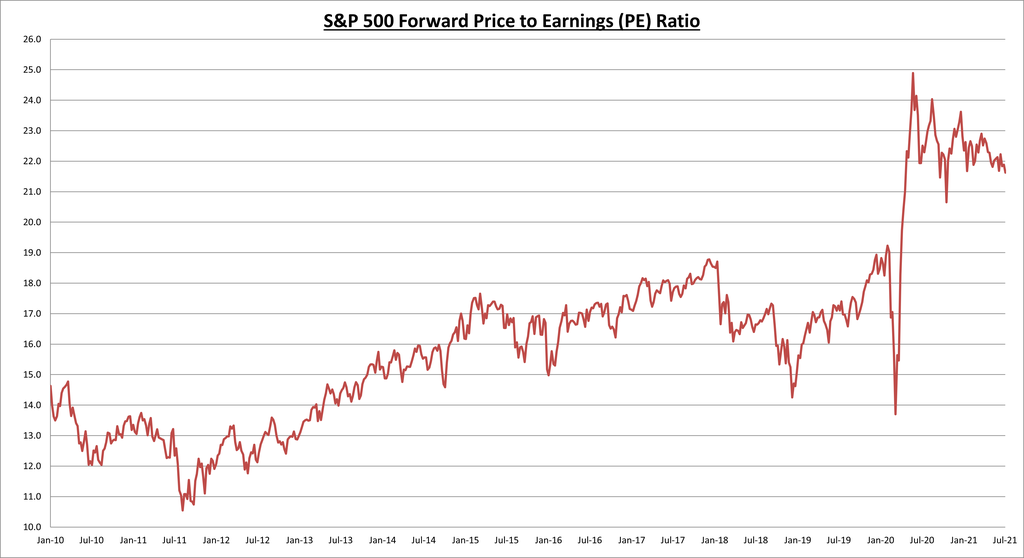
S&P 500 price to earnings (PE) ratio is now 21.6x.

S&P 500 earnings yield is now 4.62%, compared to the 10-year treasury bond rate that declined to 1.30%. The S&P 500 remains reasonably valued compared to fixed income alternatives.
Economic data review
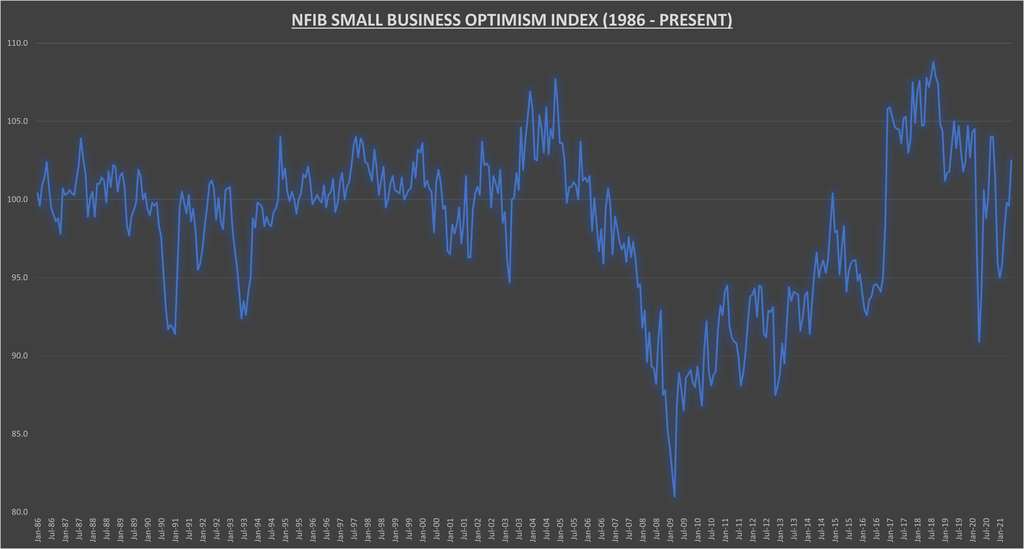
The NFIB Small Business Optimism Index increased to 102.5 in June. 7 of the 10 index components improved for the month, led by percentage of owners expecting the economy to improve. 102.5 represents the highest reading in 9 months, and above the historical average of 98.4.
Small business owners continue to have difficulty filling open positions, as the percentage of firms with unfilled positions continues to be a drag on the entire index. 46% of small businesses now have at least one unfilled position, a modest downtick from last months record high, but still well above anything we have seen.
As for inflation, 47% of owners report raising average selling prices in June. The highest reading since January 1981. And a net 44% of owners plan price hikes in the near future. “The incidence of price hikes on Main Street is clearly on the rise as owners pass on rising labor and operating costs to their customers.”
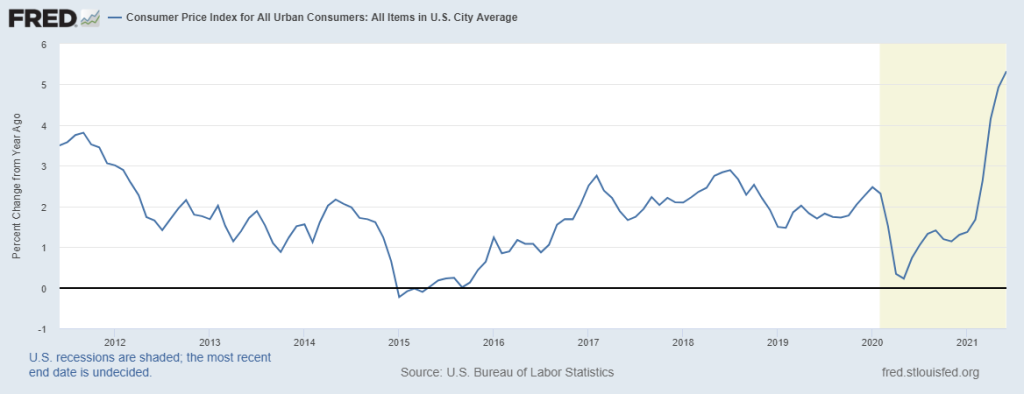
Consumer Price Index (CPI) increased 0.9% in June, this was the largest monthly increase since June 2008. On an annualized basis, CPI inflation is now +5.3% (up from +4.9% last month).

Consumer Price Index minus food & energy costs (Core CPI) also increased +0.9% for the month. On an annualized basis, Core CPI is now +4.5% (up from +3.8% last month). This is the highest annualized Core CPI reading since November 1991.
The price increases were broad based across all categories, but the biggest increases came from energy/gasoline prices (+44% annualized), and used cars and trucks (+45% annualized).

The Producer Price Index (PPI) increased 1.0% in June, an annualized increase of +7.3% (up from +6.6% last month). Producer inflation continues to run hotter than expected. PPI is seen as a leading indicator of inflation, since producers generally raise selling prices on consumers to cover the extra costs.
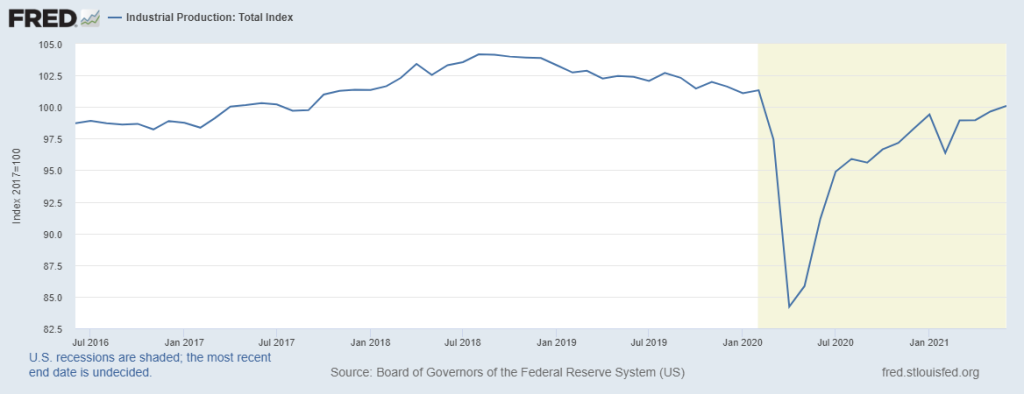
Industrial Production increased +0.4% in June, below street expectations of +0.6%, and +9.8% over the last 12 months. Industrial Production has now recovered 92.8% of the COVID decline.
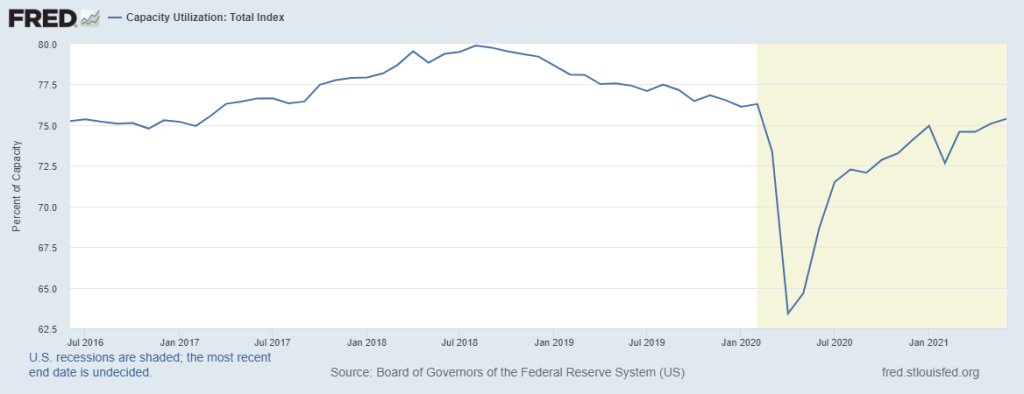
Capacity utilization increased to 75.4, a post COVID high point. It’s clear that supply chain disruptions continue to suppress total growth potential.
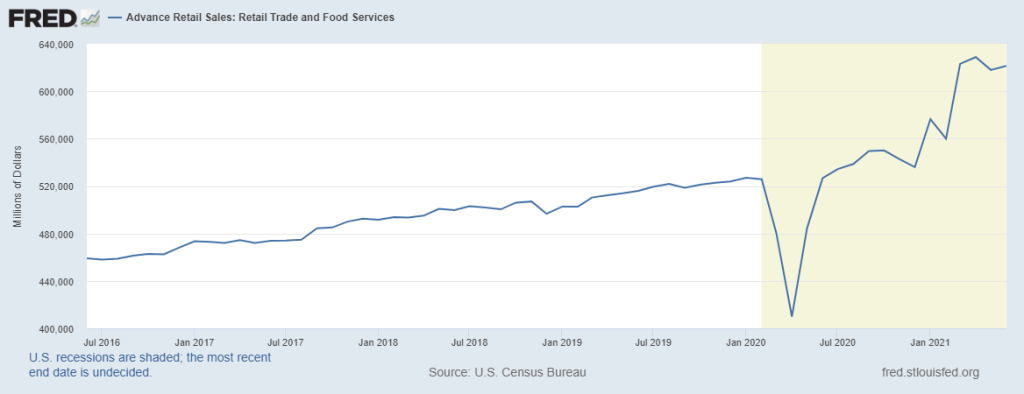
Total Retail Sales increased +0.6% in June, to $621.3 billion. The street was expecting a decline of -0.4%. Total retail sales is up +18% from June 2020 results.
Over the last 12 months, the biggest contributors to the overall growth was Clothing & apparel (+47%), Food Services (+40%), Gasoline (+37%), Electronics & appliance stores (+37%), Motor Vehicle & parts dealers (+19%).
Notable earnings
Financial services company Blackrock (NYSE:BLK) was the standout this past week. The company reported adjusted EPS of $10.03, a growth rate of +32%, and 6.3% above street expectations.
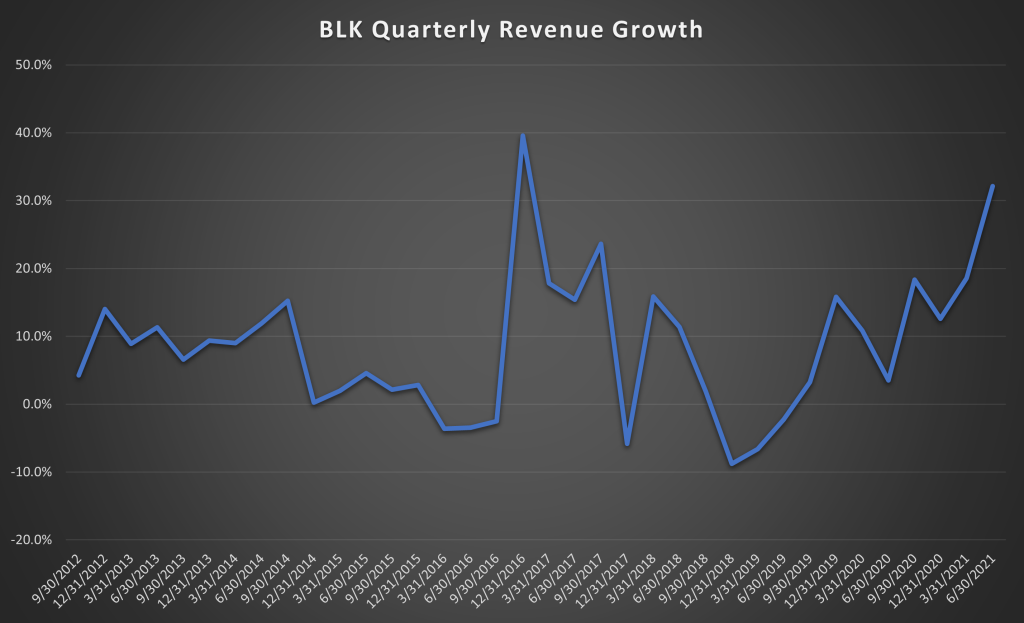
Revenues came in at $4.82 billion (a quarterly record for the company), which is a growth rate of 32%, and +4.2% above street expectations. Operating income grew to $1.931 billion, a gain of +37%, as operating margins increased from 38.5% to 40.1%. Total assets under management hit a record $9.49 trillion for the quarter, up +30% from $7.32 trillion in Q2 2020, as a result of market gains and inflows into its financial products.
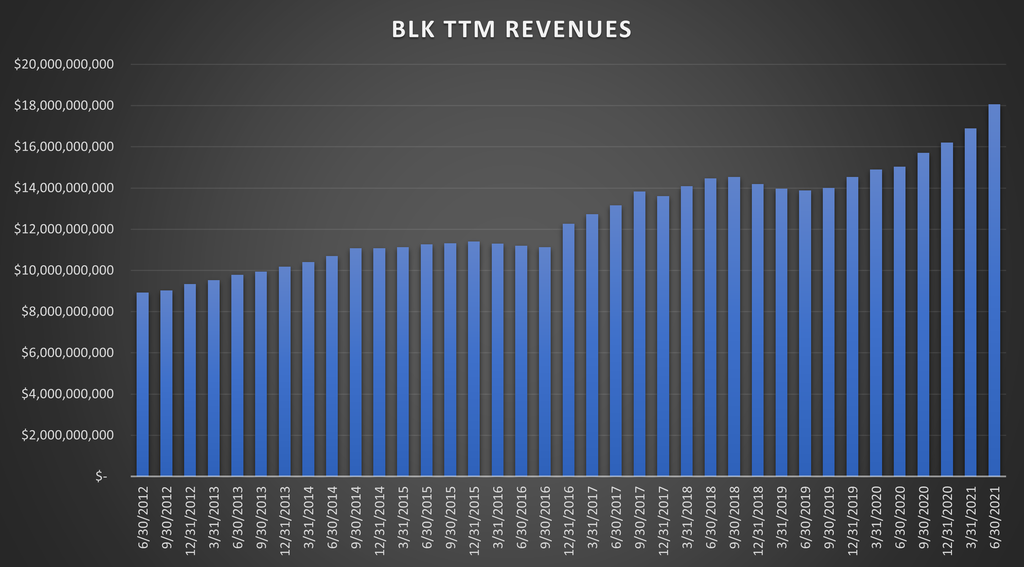
Blackrock has now reported $18.065 billion in revenue over the last four quarters (trailing twelve months—TTM) a record high for the company.
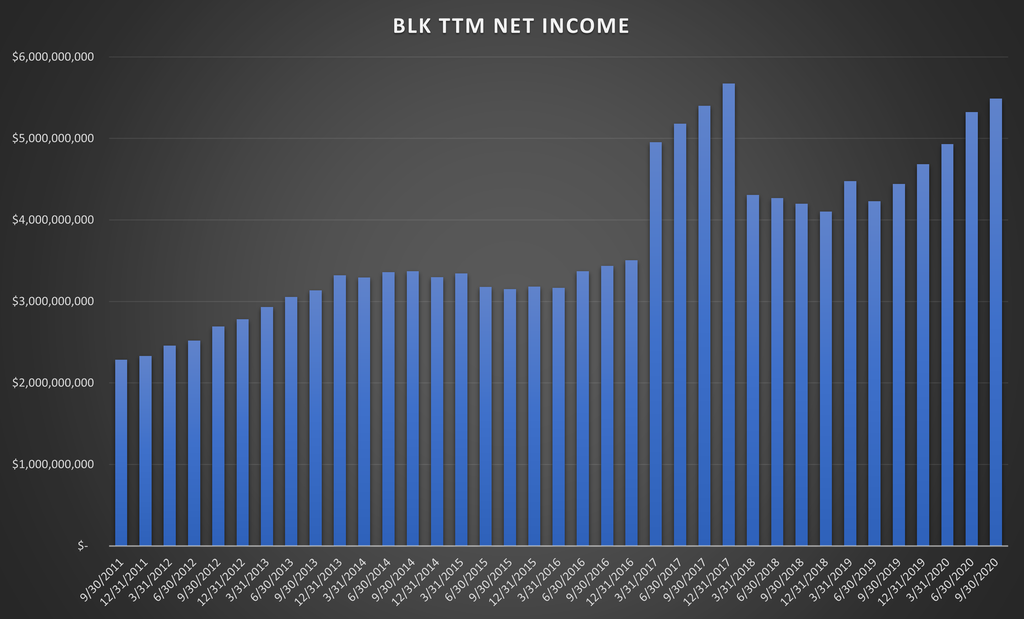
While TTM net income has risen to $5.489 billion.
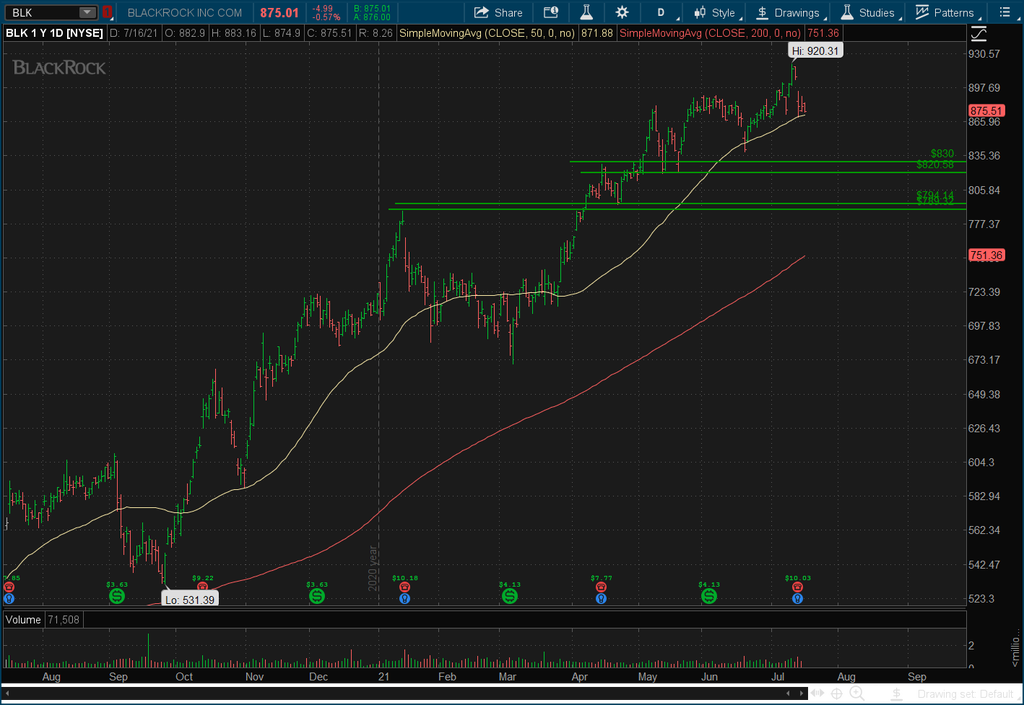
As the worlds largest asset manager, Blackrock has been one of my favorite non-tech/consumer stocks. It’s not easy to find a company that grows earnings 12%, and revenues 10% annualized over the last 10 years, with 30%+ profit margins, strong returns on invested capital, impressive competitive advantages, and little debt.
The stock isn’t cheap, but its not terribly expensive either IMO against the backdrop of an S&P 500 that has doubled in value over the last 15 months. I’d add to positions if the stock price fell to the low $800’s to high $700’s.
Chart of the week
The US stock market now makes up 59% of the worlds total investable market. To put this in perspective, in 1900 the US accounted for only 15% of the worlds stock market. Today, the US market is more than triple the size of the entire Eurozone plus the UK. Despite all the current and future potential problems, the demand for US dollar denominated assets (including treasury bonds/government debt) has never been higher.
Source: JP Morgan Guide to the Markets Q3 2021
Summary
I was pleasantly surprised to see the Small Business Optimism index increase back above the historical average. Now both small business and consumer optimism are coming back, and that bodes well for the continued expansion. Inflation will remain a challenge, but rates have remained surprisingly low.
The biggest risk is if the Fed has to begin reversing course sooner than the market anticipates. I anticipated the Fed would begin to “taper” its monthly bond buying program before the end of the year, since its much easier than raising rates. But Fed Chair Powell reiterated this past week that the committee isn’t even considering this yet.
I think this could be a mistake. It’s easier to gradually remove stimulus. If the Fed waits too long, it runs the risk they fall behind, and would then need to adjust policy at a much faster pace, that could be disruptive to markets. But that’s still a ways off.
Overall the fundamental picture remains solid. Earnings are great and interest rates are still nowhere near high enough to threaten the expansion. Q2 will likely be peak earnings and economic growth. Watch for more “is this as good as it gets?” rhetoric coming our way.
While the growth rate will moderate from here on out, I anticipate that growth will remain above average for awhile. But don’t be surprised if the peak growth “scare” could be good for a temporary market correction. If it happens, it would be perfectly normal and healthy.
This week: About 15% of the S&P 500 will be reporting earnings. I’ll be paying attention to Netflix (NASDAQ:NFLX) on Tuesday, ASML Holding NV ADR (NASDAQ:ASML), Microsoft (NASDAQ:MSFT), and Tesla (NASDAQ:TSLA) on Wednesday, and DR Horton (NYSE:DHI) on Thursday.
For economic data we have the CB Leading Economic Index (LEI) on Thursday.


